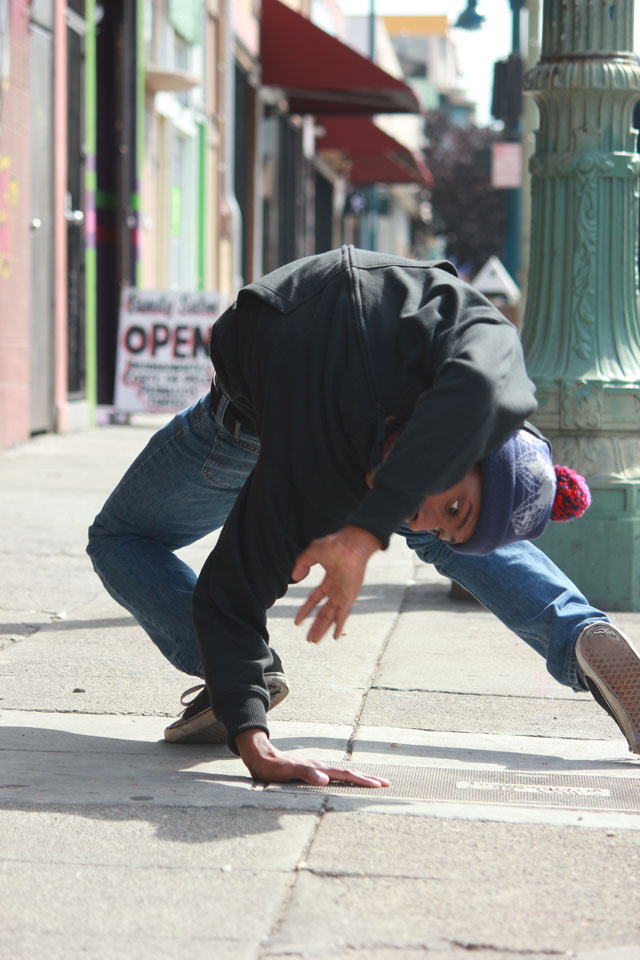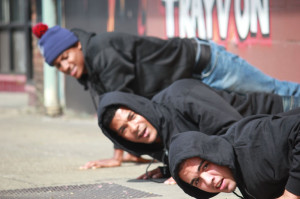We’ve come a long way from West Side Story. No more pretty switchblade scissor-kick or pegged-jean pirouettes for us. Here’s our new crib note for context: begin with the mid-century rise and fall of an underserved, black working class, accompany with the rise and calculated destruction of the Black Power movement, douse with the militarization of urban policing, sprinkle in the biometric scanning of Oakland residents since 1999 (akin to the type you might find in say, Fallujah), and this, dear reader, is our scene.
If it fails to draw a real picture, we’ve only to imagine Martha Graham’s dance company on the rubbled streets of Baghdad, and eureka! Now we’ve found the right page. Let’s begin:
The recent death of Anastasio Hernandez-Rojas is NAKA Dance Theater’s point of inspiration and departure for The Anastasio Project, a multidisciplinary public performance that investigates race relations, state brutality, and violence. Though it’s been four years since Hernandez-Rojas was detained and subsequently killed by a group of U.S. Customs and Border Patrol agents near the Tijuana Border in May 2010, no one has yet been held accountable for his death.
The choreography of one man’s death is a dance of tasers and fists. Alone, save for the handful of border patrol agents who are beating him, our subject is handcuffed face down on the quintessential concrete stage. Cell phones document the event, screams and shouts punctuate it, and the man’s last gasp and final heartbeat close the act. Using several local narratives, cell phone footage, and recent interviews with Anastasio’s widow in San Diego, Naka Dance Theater’s Debby Kajiyama and José Navarrete are interested in connecting Anastasio’s death to the impact and trauma of similar, all-too-common local experiences in brutality.

Intent on public dialogue, Kajiyama and Navarrete have sidestepped the traditional stage for the streets. In their push to perform along the complex environment of International Boulevard in East Oakland, the team hopes not only to reflect issues already familiar to the community, but to reinvigorate conversation in a place where exclusive models of contemporary performance run the risk of leaving residents cold.


